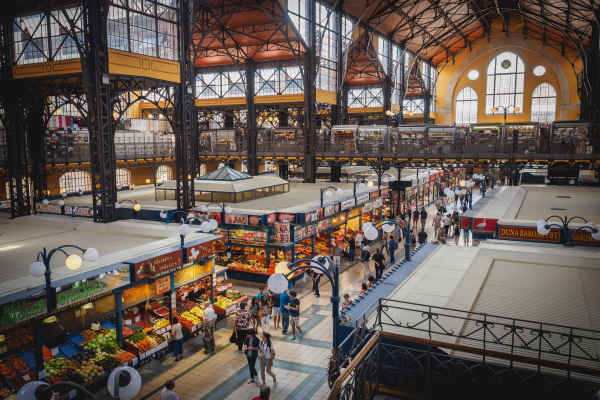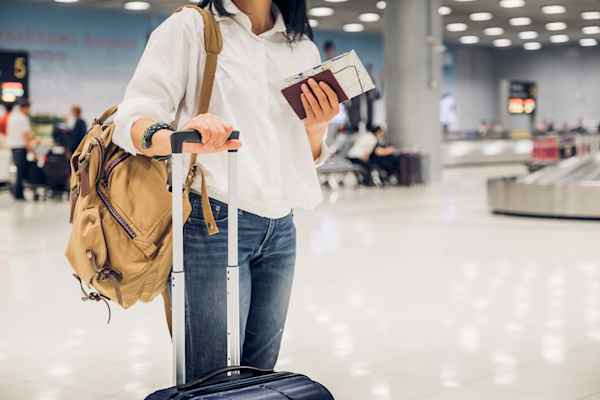
Seven million litres of beer. One hundred thousand roast chickens. Sixty thousand pork knuckles. One hundred and three acres of festivities. Thirty-two beer tents. Carnival rides, traditional Bavarian outfits, hundreds of years of consecutive celebration of the marriage of two very important Bavarian monarchs, King Ludwig I and his bride Therese, and you’ve got yourself the ingredients for one of the biggest and most memorable festivals in the world. So where do you begin?
Step 1: Where To Stay
One of the first things you’ll need to sort out is where you’re going to rest your weary beer-soaked bones after a day at the festival. With around six million visitors to Oktoberfest every year, accommodation books out fast. During September and October prices spike on accommodation all across Munich, so booking accommodation is likely going to be your biggest cost to cop and also one of the first things you should book. Check out hostels (the Busabout recommended accommodation is Wombats Munich) or even go in for an AirBnB if you’ve got a group. If you want things taken care of - including accommodation, breakfasts, transfers to the festival - you can also check the Busabout Oktoberfest Camping or Hostel packages. This is perfect for solo travellers too, because then you’ve got a ready made group of mates to explore with!
Step 2: What To Wear
One of the best parts about Oktoberfest has got to be the delightful traditional outfits. Women’s wear typically revolves around the dirndl: a traditional dress with a structured bodice, tightly tied and decoratively embroidered. The lederhosen, or ‘leather trousers’ is the get-up usually worn by men, with traditional stitching and shoulder braces. It’s 2019, so choose what you want and rock it. Though it’s easy to think of these as ‘German’, it’s actually only in Bavaria and across the border in Austria that dirndls and lederhosen are traditionally worn.
Dirndl: Expect to pay a minimum of 50 euro for a Dirndl. Prices range up to the hundreds for these traditional dresses, worn with a white blouse underneath and an apron. The traditional Bavarian colours are a light blue, but they now come in all shapes and sizes. The three pieces are the blouse, the dirndl and the apron. For the blouse, the off-the-shoulder undershirts are more modern, whereas the traditional ones come down almost to the elbow. The dirndl itself then has some kind of corsetting usually to keep the bodice tight, as well as a zip up the back. If you’ve been to an Oktoberfest in say, Australia, you might have seen people wearing little miniskirt-style dirndls. This doesn’t fly in Oktoberfest, just a heads up! A dirndl should come at least to your knees, or also common is the midi length style. The apron is the final piece of your outfit, and it’s important where you tie the ribbon. Bow to the right, means taken. Bow to the left, means single. Bow in the middle, means you’re a virgin, and wear it at the back if you want to tell people you’re a widow. These days pair whatever shoes you like with your dirndl. Sneakers are fine! You also really don’t want open sandals. There can be glass on the beer tent floor later in the night, and people are dancing on chairs, so wear something comfortable and sturdy so you can dance all day and night and frolic about the fairgrounds trying the carnival rides.
Lederhosen: The Bavarian menswear are traditionally made of goat or buckskin. They feature patterning, and if you’re looking at high-quality lederhosen you’ll be able to run your finger over the stitching and feel the indents. If it’s more cheaply made, the stitching will lay flat. Prices start from 80 - 100 euro, but if you’re looking for the most traditional type you’ll be forking over quite a bit more than that. The lederhosen are worn with over-shoulder braces, characterised by the decorative chest panel joining the two shoulder straps. You’ll also need long white socks and a checkered shirt. Traditionally, Bavarian colours are a light sky-blue colour with white, but you’ll see lots of forest-green and navy-blue as well. Lederhosen also look fabulous with a traditional felt hat.
Step 3: Do’s and Don’ts - Oktoberfest Etiquette
Do: Tip your server. Firstly, the Bavarian ladies and gents who work Oktoberfest carry up to 12 beer steins at a time, through crowds of rowdy drunk people for weeks on end. They do a fabulous job and deserve a little appreciation. Secondly, you also want your server to remember your table, so they keep serving you up frothy cold ones and deliver greasy, heart warming feasts when you’re ready for dinner. Beers generally cost around 11-13 euro, depending which tent you’re in. Tip a couple of euro the first time so that you get on your server’s good side, then you can tip a euro each time after that. Most tents don’t do half-litres, so you’ll be ordering the big one-litre steins. In Bavaria these are known as a maβ (pronounced mass). Ein maβ bitte!
Don’t: Dance on the tables. Dancing on the chairs is more than just tolerated, it’s encouraged. You’ll see Bavarians and foreigners alike stomping away to Sweet Caroline on the long wooden chairs in the beer halls. However, take one step onto the table and a beer-maiden or security will instantly appear to shoo you down. Respect their halls, and they’ll appreciate you much more for it.
Step 4: Inside The Festival
It’s a common mistake that people think they need tickets for the festival itself. It’s free! Anyone can stroll into the hallowed Theresienwiese grounds in Munich, just where the original wedding between King Ludwig and Princess Therese was celebrated in October of 1812. These days the festival welcomes about 6 million people every year. There are 14 large tents with seats for up to 10,000 people, inside and outside. Then there are about 18 smaller tents with seats for a few hundred guests. Each tent is set up by a different beer, and will only serve you that beer inside. Here are just a few... Hacker-Festhalle, nicknamed “Bavarian Heaven” thanks to its blue sky interior. Hoffrbrauhaus, the rowdiest tent which is decorated with strings of hops and is often full of loud Australians and New Zealanders. Paulaner, with the big plastic lion on top and a band rocking all day. Festzelt Tradition, which has a dance floor in the centre and attracts charming Bavarian couples with their dancing shoes ready to go. Every tent has something which makes it special, so it’s best to go tent-hopping. That way you can sample different brews and see the beautiful decor inside. However, you won’t get served if you don’t have a table and the halls can get busy, so check the tents out in the day time before they get full.
Step 5: Food, Fair Rides and Fun!
Oktoberfest for 2019 is scheduled for September 21 to October 6. It’s one hell of a party, the biggest beer festival in the world and an important cultural celebration for Bavarians. There are alo carnival-rides all over the fairgrounds, as Oktoberfest is one for the whole family. Just do yourself a favour and don’t go on the roller-coaster when you’re two-litres in! If you’re heading along, remember to stay hydrated with more than just beer and make sure you try the delectable food options on offer. Beer maidens walk up and down the halls with pretzels like they’re going out of fashion. Some Bavarian classics are crispy pork knuckle with dumplings and mouth-wateringly good gravy, succulent roast chicken and creamy potato salad, and all the wursts (sausages) in the world. You’ll find scant vegetarian options inside as the cuisine is very meat-heavy, but there are a few garlicky mushroom roasts or vegetarian schnitzel burgers if you look. For those with a sweet tooth, you’ll also see lots of charmingly-decorated gingerbread hearts which you can wear as a sweet necklace and nibble on when you’re peckish. The beer tents start serving early, around 10am, and run until late into the night, so get in and enjoy. Make sure if you’re headed to Oktoberfest that you leave time to explore wonderful Munich as well, checking out historic sites like Marienplatz, the famed Englischer gardens and Viktualienmarkt, or take a day trip out to the ‘disney castle’ Neuschwanstein.
Interested in taking on Oktoberfest with a Busabout group? Check out the hostel or camping options!






